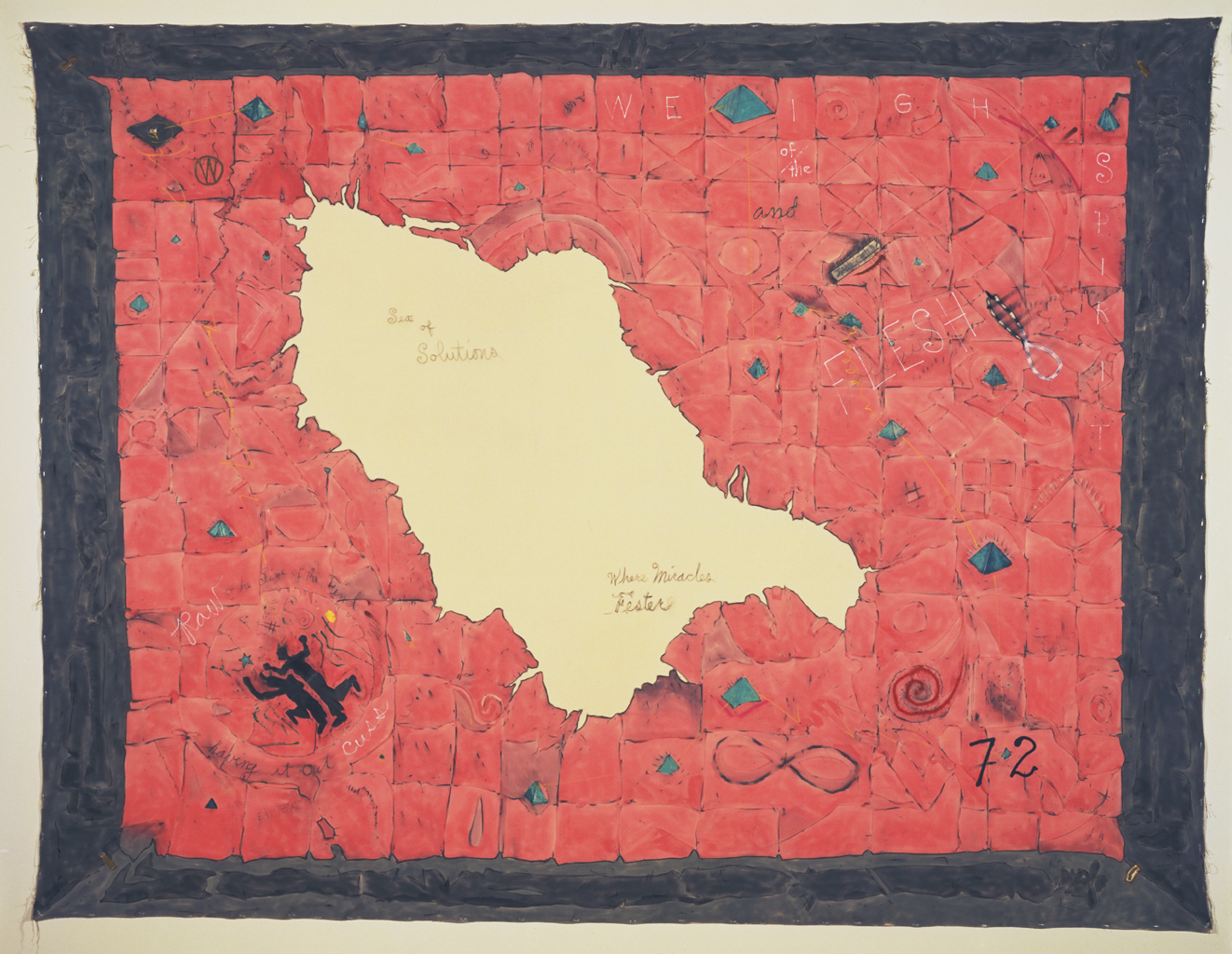William T. Wiley
(Bedford, Indiana, 1937 - )
Weigh of the Spirit and Flesh
1972
Acrylic on canvas
84 x 111 in. (213.4 x 281.9 cm)
Collection of the Akron Art Museum
Purchased with funds from the National Endowment for the Arts and the John A. McAlonan Trust Fund
1975.15
More Information
Wiley's paintings from the early seventies began as a reaction against the rationalism and seriousness of minimal and abstract art. Inspired instead by surrealist art and popular culture, the works incorporate verbal games, visual puns and whimsical elements and display an irreverent, funky aesthetic. 'Weigh of the Spirit and the Flesh' is a "map," creased like paper that has been folded for many years. If travel is a metaphor for life, where will this map lead you? To treasure or trouble? Will you follow the path of the flesh or the spirit?

